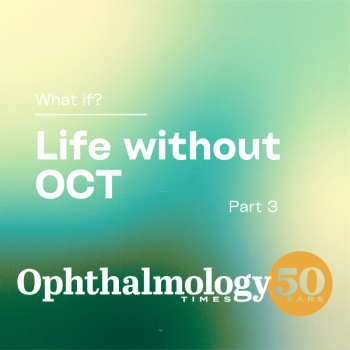
Comparative study finds cataract surgery patients favor simpler medication regimen
Patients prefer the convenience of using a compounded triple combination drop over a standard medication plan.
Preliminary results from a prospective, randomly selected contralateral eye-controlled study show that patients prefer the convenience of using a compounded triple combination drop over a standard medication regimen for preventing infection and inflammation after routine cataract surgery.
At the
Dr. Sandoval is director of research, Caroline Eyecare Physicians, Charleston, SC.
Data from 19 patients who completed the one-month follow-up showed no differences in macular thickness or corneal pachymetry comparing the group of eyes treated with the combination drop versus the control group using the three separate medications.
Use of the combination drop was not associated with any unanticipated adverse events. While there was no statistically significant difference between treatments in patient satisfaction18 of 19 patients indicated they were satisfied or very satisfied-patients were unanimous in stating they preferred the combination drop regimen.
“It has been standard of care to use an antibiotic, NSAID, and corticosteroid to prevent infection and inflammation after cataract surgery, but we know that patient compliance is an issue,” Dr. Sandoval said. “Some patients are unable to self-administer the drops or have a lack of understanding about the instructions for or importance of using the treatment. Patients may also forget to use the medications and some just avoid using them because they dislike putting drops in their eyes multiple times a day for 2 to 4 weeks.”
According to Dr. Sandoval, there were some issues enrolling patients in this study.
“The main reason why patients declined to participate is that they did not want to have to use three separate drops,” she said. “Two-thirds of the patients we tried to recruit declined to participate because they elected to use only the combination drops.”
The study has a planned enrollment of 35 patients. To be eligible for participations patients have to be undergoing bilateral, routine cataract surgery. The first eye is randomized to use either the combination drop or the three separate medications and then the fellow eye is treated with the alternate regimen.
The dosing regimen for the standard drops requires patients to start both gatifloxacin and bromfenac three days prior to surgery. The gatifloxacin is administered four times a day and continued for two weeks postoperatively. Bromfenac is administered once daily and continued for four weeks after surgery. The corticosteroid is started after surgery and administered on a tapering regimen that begins with four times daily dosing for two weeks followed by twice daily dosing for two weeks.
The triple combination drop is also used on a tapering regimen. Beginning on the day before surgery and then continuing for two weeks postop, it is administered three times daily. The frequency is then decreased to twice daily for 1 week and then to just once daily for 1 more week. Patients are given a diary to track the use of their drops.
Dr. Sandoval reported that there were no significant differences between the two study groups in surgical parameters (duration, phaco time, cumulative dissipated energy, or amount of irrigation fluid used). Follow-up visits are being conducted on postoperative days 1, 15, and 30. Change from preoperative central macular thickness is the primary outcome measure, and the results for the combination group showed it was increased significantly at day 15 when it was first assessed and remained increased at day 30. However, there was a comparable increase in the control group, Dr. Sandoval said.
Corneal thickness was measured at all follow-up visits and was increased significantly on the first day after surgery in both groups, but the increase was less in the control group. At days 15 and 30, corneal thickness had returned to baseline levels in both groups.
Intraocular pressure (IOP) was increased significantly in both groups on day 1 after surgery, but the increase was significantly less in the combination group. IOP returned toward baseline in both groups on day 15 and 30, but still remained significantly higher in the control group.
Dr. Sandoval reported that one eye in the control group experienced a steroid IOP response.
Signs of postoperative inflammation were minimal at all follow-up visits in both treatment groups. Cells on the first postoperative day was the most commonly reported sign of inflammation and was seen in a higher percentage of eyes in the combination group.
“The difference was not clinically significant, and there was no difference between groups in mean logMAR UCVA,” Dr. Sandoval said.
Questions about comfort showed that the percentages of patients reporting foreign body sensation were identical for the two treatments at all follow-up visits. However, burning or stinging were reported more often at all three follow-up visits with use of the separate drops.
“The burning and stinging were mainly related to the bromfenac,” Dr. Sandoval said.
Pain was reported only on the first postoperative day. It represented discomfort after surgery and the incidence was 11% (two patients) for eyes treated with the combination drop and 5% (one patient) for eyes treated with the standard regimen.
In addition to the steroid response, other adverse events included rebound inflammation (both eyes of one patient), corneal epithelium sloughing (both eyes of one patient), diabetic macular edema (one control eye), and ocular dryness (one combination treatment eye).
The study is an investigator-initiated trial supported by
Disclosures:
Dr. Sandoval and Dr. Solomon have no relevant financial interest.
Newsletter
Don’t miss out—get Ophthalmology Times updates on the latest clinical advancements and expert interviews, straight to your inbox.



















































.png)


